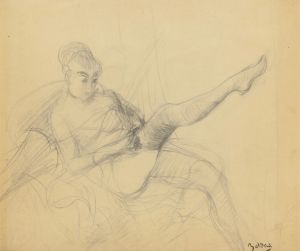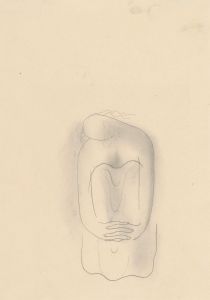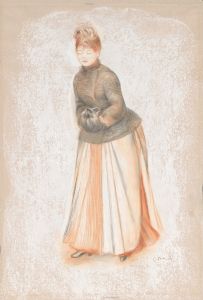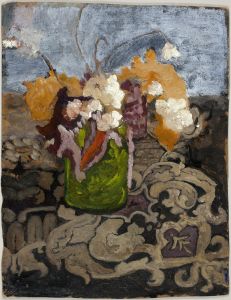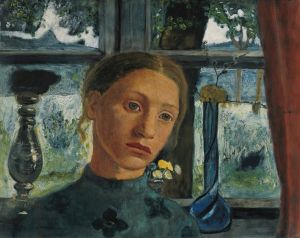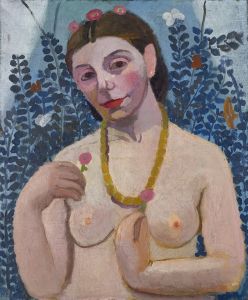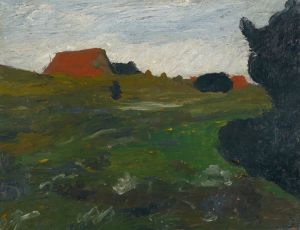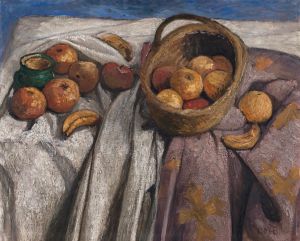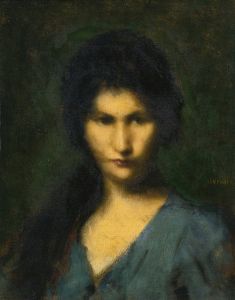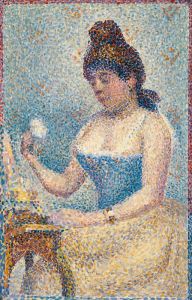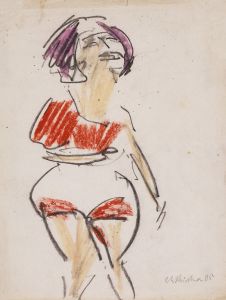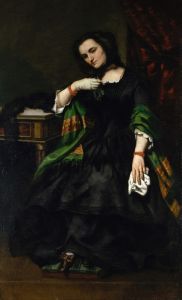
Self-portrait
A hand-painted replica of Paula Modersohn-Becker’s masterpiece Self-portrait, meticulously crafted by professional artists to capture the true essence of the original. Each piece is created with museum-quality canvas and rare mineral pigments, carefully painted by experienced artists with delicate brushstrokes and rich, layered colors to perfectly recreate the texture of the original artwork. Unlike machine-printed reproductions, this hand-painted version brings the painting to life, infused with the artist’s emotions and skill in every stroke. Whether for personal collection or home decoration, it instantly elevates the artistic atmosphere of any space.
Paula Modersohn-Becker (1876-1907) was a pioneering German painter and one of the most important early expressionists. Her work is characterized by its bold use of color and form, and she is particularly noted for her portraits and self-portraits. One of her most famous works is her "Self-portrait" created in 1906, which is often cited as a significant example of her mature style.
The "Self-portrait" by Paula Modersohn-Becker is an oil painting that depicts the artist herself in a direct and intimate manner. In this work, Modersohn-Becker portrays herself with a calm and introspective expression, gazing directly at the viewer. The painting is notable for its simplicity and the way it captures the essence of the artist's personality and inner life.
Modersohn-Becker's approach to self-portraiture was innovative for her time. Unlike many of her contemporaries, she did not idealize her appearance or conform to traditional standards of beauty. Instead, she presented herself in a straightforward and honest manner, emphasizing her individuality and inner strength. This approach was reflective of her broader artistic philosophy, which sought to capture the truth of her subjects rather than adhering to conventional aesthetic norms.
The composition of the "Self-portrait" is marked by its strong use of color and form. Modersohn-Becker employs a limited but rich color palette, with warm earth tones and subtle contrasts that enhance the sense of depth and volume. Her brushwork is confident and expressive, contributing to the overall sense of immediacy and presence in the painting.
This self-portrait is also significant because it reflects Modersohn-Becker's engagement with contemporary artistic movements. She was influenced by the work of the French post-impressionists, particularly Paul Cézanne and Vincent van Gogh, whose emphasis on structure and emotional intensity resonated with her own artistic goals. At the same time, she maintained a distinct personal style that set her apart from her peers.
Paula Modersohn-Becker's "Self-portrait" is housed in the Paula Modersohn-Becker Museum in Bremen, Germany, which is dedicated to her life and work. The museum holds a substantial collection of her paintings, drawings, and other works, providing valuable insight into her artistic development and legacy.
Modersohn-Becker's career was tragically short; she died at the age of 31, shortly after giving birth to her daughter. Despite her brief life, she left a profound impact on the art world, and her self-portraits, in particular, continue to be celebrated for their pioneering approach and emotional depth.
In summary, Paula Modersohn-Becker's "Self-portrait" is a powerful and intimate work that exemplifies her innovative approach to portraiture and her commitment to capturing the truth of her subjects. It remains an important piece in the history of early 20th-century art and a testament to her enduring influence as an artist.





